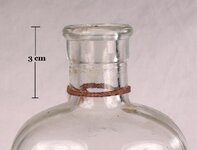RelicDude
Bronze Member
- Apr 20, 2012
- 1,486
- 1,648
- 🥇 Banner finds
- 1
- Detector(s) used
- Minelab E-trac
- Primary Interest:
- All Treasure Hunting
Here's one of the first bottle finds. I found this bottle in a barn of an old farm house I lived in, in Maine. I'm just curious if any one knows anything about the company on the label. Thanks for your help. - Justin





![equine-trio-horse-head-sculpture-[3]-13315-p.jpg equine-trio-horse-head-sculpture-[3]-13315-p.jpg](https://www.treasurenet.com/data/attachments/904/904853-1c78d7c296d0915f2cc7dac9f58b570a.jpg)




